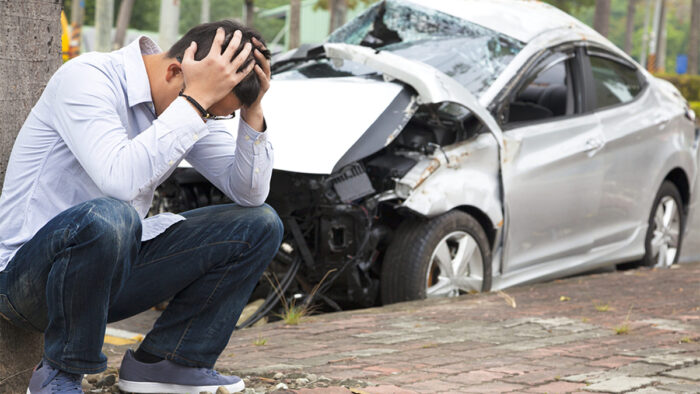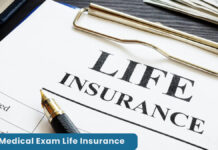Single-vehicle accidents typically refer to a situation where a vehicle is engaged in an accident without the involvement of any other vehicles or parties. Most times, it leaves drivers devastated because of the cost of repairing and replacing damaged parts incurred from the accidents. Many people often wonder if car insurance does cover single-vehicle accidents. If you fall into the category of those who seek answers to this, then you are in the right space.

First and foremost, it is essential to have an understanding of the specifics of your insurance policy. This is because coverage changes depending on the type of car insurance coverage you have and the circumstances surrounding the accident.
Who is Liable in a Single Vehicle Accident?
As the name implies, the driver will be deemed responsible for any damage incurred since it is a single vehicle accident. Most times, single-vehicle accidents occur as a result of the driver’s overspeeding, recklessness, or negligence. If another person sustains an injury or you damage someone’s property, you will be held responsible for all related expenses.
A single-vehicle accident often plays out in different scenarios. It could be that the driver collided with a cyclist or wild animal. Sometimes it involves collision with private property, such as fences and walls.
Does Car Insurance Cover Single-Vehicle Accidents?
Car insurance will cover single-vehicle accidents if you have comprehensive or collision coverage on your auto insurance. These two types of coverage can come to your rescue if you were involved in a single vehicle accident that caused damage and injury.
On the flip side, if you don’t have either collision or comprehensive coverage on your auto insurance, you will most likely not be covered. In this situation, you will be deemed responsible for covering the cost of repair on your own. In addition, it is possible for your car insurance premium to skyrocket when you file a claim for a single vehicle accident.
How Does Insurance Cover Single Vehicle Accidents?
The applicability of coverage for a single accident largely depends on the nature of the accident and the type of policy you have. Your collision coverage can be applied if the accident caused less damage and injury. On the other hand, comprehensive coverage is applicable for unanticipated scenarios that led to the accident.
For instance, if you crash into a wall, you can get coverage from your collision insurance because the damage is preventable in some way. But, in a situation whereby you run into a deer, comprehensive coverage is more applicable because the movement of the animal is unexpected and beyond control.
Can I Leave the Scene of Single Vehicle Accidents?
It is not advisable to leave the scene of a single vehicle accident, as it attracts severe penalties in most states. Property damage is one of the common outcomes of single-vehicle accidents, and police will typically want to look into what caused it. If you flee the scene without reporting the damage to the police, it will be considered a hit-and-run.
Nevertheless, while it is not advisable to leave the scene, if you identify other risks or perils, you can leave immediately to ensure your safety. Regardless, report the incident to the police and reach out to the affected party, if any. Enumerated below are some of the penalties attached to leaving the scene of a single vehicle accident:
- Revoked driver’s license.
- Jail time.
- Cancellation of car insurance.
- Increase in car insurance rates.
- Punitive points on the driver’s motor vehicle record.
To avoid these punishments, we encourage drivers to remain claimant, ensure their safety, reach out for medical assistance, if necessary, and report the accident to the police.
What Should I Do If I Get Into A Single Vehicle Accident?
Accidents often leave people confused and traumatized, whether they involve other parties or not. The first thing you should do is check yourself for I juries and move to a safe location. If you notice you had an injury, then you need to call for medical help. To prevent further issues, it is advisable to park your vehicle at the side of the road.
Once you have ensured your safety, the next thing that should come to your mind is documenting the scene. Take pictures and videos of the damage done to your car. This will serve as evidence and even aid the claim process. After documenting the incident, call the police to file a report. Aside from the photos and videos you have taken, a police report goes a long way in making the claim process faster.
How Can I Prevent Single Vehicle Accidents?
The best way to avoid getting yourself in a single vehicle accident is by maintaining focus while driving. If you have things that can distract you while driving, such as a phone, take them away. Most single-vehicle accidents are caused by the driver’s recklessness and negligence. Consider the current weather before driving; it is advisable to avoid driving in poor weather conditions, such as ice, snow, and hail.
If you are driving at night, be vigilant and drive slowly. Be on the lookout for deer and other animals that can dash into the road while you are driving. Additionally, if you notice you feel drowsy while driving, park in a safe place where you can rest before you continue driving.



